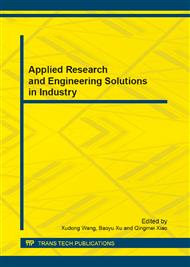p.469
p.475
p.480
p.484
p.489
p.494
p.498
p.502
p.506
New Algorithm for Ink Trapping Ratio Based on Transmittance
Abstract:
To reflect the relationship between the trapping effect and colorimetric value of prints, this paper establishes an algorithm to calculate the ink trapping ratio. The new algorithm assumed that the second ink of two-color overprint solid forms an evenly distributed and thinner ink layer by keeping the total ink volume as constant and it employed the transmittance of single solid ink and overprint solid to compute the ratio of the thickness of the second ink layer printed on the first ink layer and on the blank paper on basis of Lambert's law. Because of the difficulties of measuring the transmittance of prints, it used the Clapper-Yule model to calculate them. To evaluate it, the ink trapping ratio computed by the densitometry method and the new algorithm for two sets of two-color overprint solid were adopted to predict the spectral reflectance of them. By comparing the CIELAB color difference between the calculated and measured value of spectral reflectance, the proposed new algorithm is precisely defined and it improves the calculation accuracy of ink trapping.
Info:
Periodical:
Pages:
489-493
Citation:
Online since:
February 2013
Authors:
Keywords:
Price:
Сopyright:
© 2013 Trans Tech Publications Ltd. All Rights Reserved
Share:
Citation:


